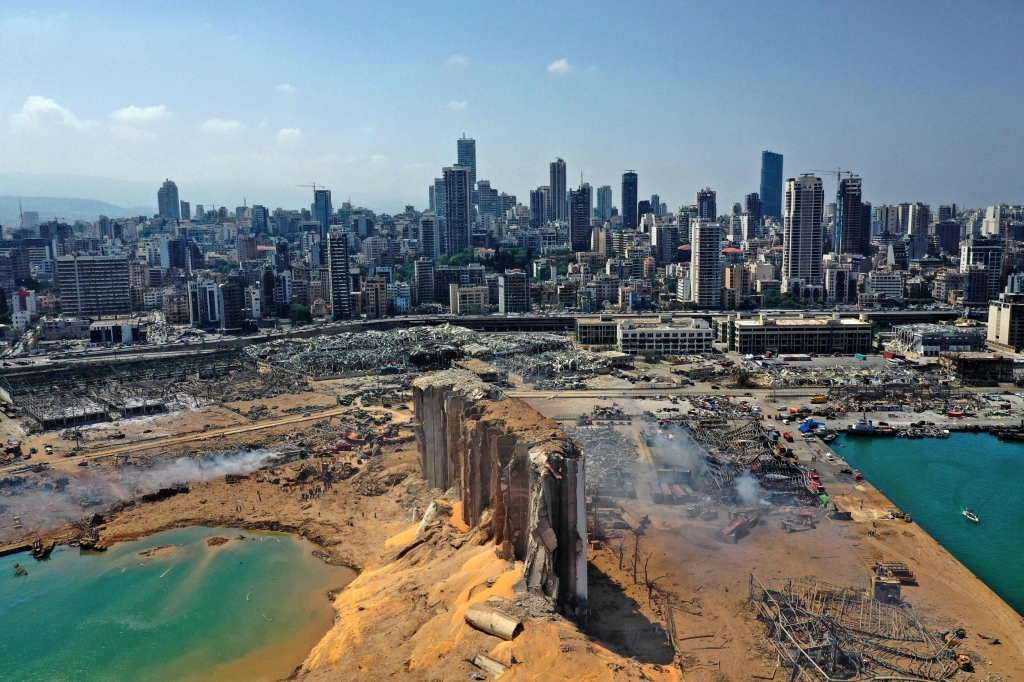Rebuilding Beirut’s port: an opportunity for social justice
By Nadine Khayat

Image: Alex Gakos / Shutterstock.com
On 4 August 2020, a powerful explosion in Beirut’s port left the city devastated with thousands of people injured and dozens dead. It took a few seconds to destroy around 40% of the city’s urban, social and architectural fabric and heritage.
In the aftermath of the explosion, we have a rare opportunity to instil social justice in the city and commemorate the victims by reimagining the destroyed port; linking the city’s seafront public spaces and reinstating historic links that the port had to the seafront, the city and its inhabitants.
Design charrettes are an effective method to obtain a variety of creative ideas that directly correspond to local need, as well as an opportunity to bridge the schism between public authorities and the Lebanese people. They provide an opportunity for failing public authorities to engage with architects, planners, youth and residents to actively participate in good place-making.
Reclaim public spaces
During the uprisings of 17 October 2019, an integral demand from protesters was a call to reclaim public spaces in the city of Beirut. Protesters stormed and occupied the privately owned and policed Zeituna Bay and Ramlet Al Bayda, the last remaining public beach constantly under threat of privatisation.
They did this as an act of defiance against policy that neglects public space, fearing the role it can play in producing revolutions. Through occupying public spaces, protestors affirmed the vital role they play, as a facilitator of social interaction and self-organisation, against ineffective government public practices.
Club membership
According to Zone 10, an urban study conducted by the Social Justice and City Program at the American University of Beirut, the seafront has been privately developed in violation of zoning regulations. The result is that many of the seafront plots have been resold to private investors seeking to develop tourism projects (see map by the Beirut Urban Lab).
This has turned a public promenade and beach into a ‘club membership’ that doesn’t target tourists, but affluent Lebanese residents predominantly living in Beirut who are required to pay entry. Examples are the Central Military Club, Riviera Hotel, The Movenpick Hotel on Manara, the last being Eden Bay on Ramlet al Bayda public beach.
Alternative visions for Beirut’s coast
Using design charrettes to protect public spaces in a contested city like Beirut is not a new concept. Activists, non-governmental organisations and civil coalitions have tirelessly worked to protect public spaces in Lebanon.
The Civil Campaign to Protect the Dalieh of Raouche, a civic coalition fighting for the public’s right to seafront public spaces, called for alternative visions along Beirut’s coast. It did so in an effort to prevent the transformation of Dalieh - a historic natural headland overlooking Beirut’s famous Pigeon’s Rock - into another private beach resort.
In another example, Nahnoo organised a community participatory visioning for Horsh Beirut. The city’s largest public park was closed to the public for twenty- five years, only opening in 2003 after an activist campaign led by Nahnoo advocated for the importance of this green public space to community cohesion.
Source: Google Earth
People-centric approach
In the aftermath of the blast, there have been calls for a people-centric approach to empower residents and subvert the power of real estate dealers, wishing to prioritise commercial gain in the redevelopment of devastated neighbourhoods.
I argue for the same principle of co-production through a national design charette: led by non-governmental organisations with the active participation of local and international universities and residents to envision the rebuilding of the port. A process that could bring about the much needed change that is currently lacking, as public authorities fail to respond to people’s demands.
Beirut’s seafront is the city’s lifeline, contributing to improved social networks, health, mobility, circulation and connectivity for many of its residents. Rebuilding the port provides an opportunity for a commemorative public space, an extension of the seafront’s public spaces and the chance for Beirut’s diverse users to participate in its design and planning.
Local communities must be empowered to claim further access to the sea; this is not only their right but a vital joy in this dense, bustling city.
Nadine Khayat is a PhD student in the Department of Landscape Architecture at the University of Sheffield. Her PhD is investigating diverse identities, typologies and governance on Beirut’s (dis)integrated seafront.